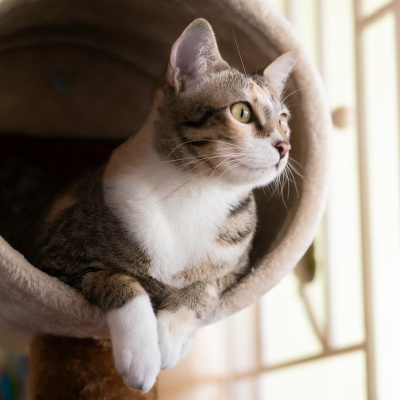Study on Pet-sitting
Do people use pet sitting, daycare or kennel services? If so, when and how often? How do they choose them ?

Do people use pet sitting, daycare or kennel services? If so, when and how often? How do they choose them ?
The Weenect survey looked at our customers' pet-sitting habits and experiences, seeking to answer several key questions.
For a complete and accurate picture, the survey was based on a customer survey of 1,199 Weenect French, German, Belgian, Austrian and Swiss customers, 587 of whom are dog owners and 626 cat owners, providing detailed information on their profiles, opinions, habits and experiences of pet care services.
This enabled a detailed understanding of the use of daycare services, providing valuable insights into respondents' behaviors and expectations.
Discover the detailed results of our study, through a series of lessons learned illustrated by graphs.
Our recent marketing survey reveals that 61% of cat owners and 56% of dog owners who responded to our poll have already used a pet-sitting service,, for a total of 58% of pet owners.
Our survey shows that neither socio-professional category, household composition nor living environment have any significant influence on childcare use.
The main occasions for which owners have their pets looked after are vacations or trips, accounting for 80% of cases, which translates into use a few times a year for 81% of respondents.
What’s more 10% of respondents use these services for work commitments, with a breakdown of 40% among executives and higher intellectual professions, 23% among employees, and 7% among intermediate professions.
The results show that recommendations from a friend or vet (57%) and online searches (21%) are the most common methods used to choose a pet-sitting service, across all age groups. Younger adults (25-34) also prefer social networks to find a pet-sitter.
Our survey reveals that the majority of respondents (61%) spend between €10 and €20 per day on pet-sitting. Budgets of €20 to €30 per day and less than €10 per day are also common, each representing around 18% of respondents.
The survey shows that 70% of pet-sitting users leave the Weenect tracker on their pet when they are with the pet-sitter. The main reasons for doing so include making pet-sitting more secure (50%) and keeping an eye on their pet from a distance (32%).
Half of owners choose to share the location data provided by the tracker with the pet sitter or boarding facility, enabling better coordination and monitoring. Those who don't use the Weenect collar prefer regular exchanges and detailed instructions.
Among the 42% of respondents who have never had their pets looked after, the main reasons include concerns about the animal's safety or well-being (32%), the fact that the animal is not at ease with strangers (26%) and the cost deemed too high (25%).
Dog owners, in this situation, try to limit their absences (30%) or entrust their pet to a relative (30%). Cat owners, on the other hand, are more likely to leave their pets alone (25%) or have a relative look after them at home (43%), which is often easier for a cat.
Our survey reveals that pet-sitting services are mostly used for vacations and professional obligations, with an average daily budget of €10 to €20. Owners rely mainly on recommendations from reliable sources when choosing these services.
Among those who have never had their pets looked after, concerns about safety and well-being are the main reasons for their reluctance. Weenect trackers, by offering real-time location and enhanced security, can reassure these owners and encourage them to consider pet-sitting services in the future.






